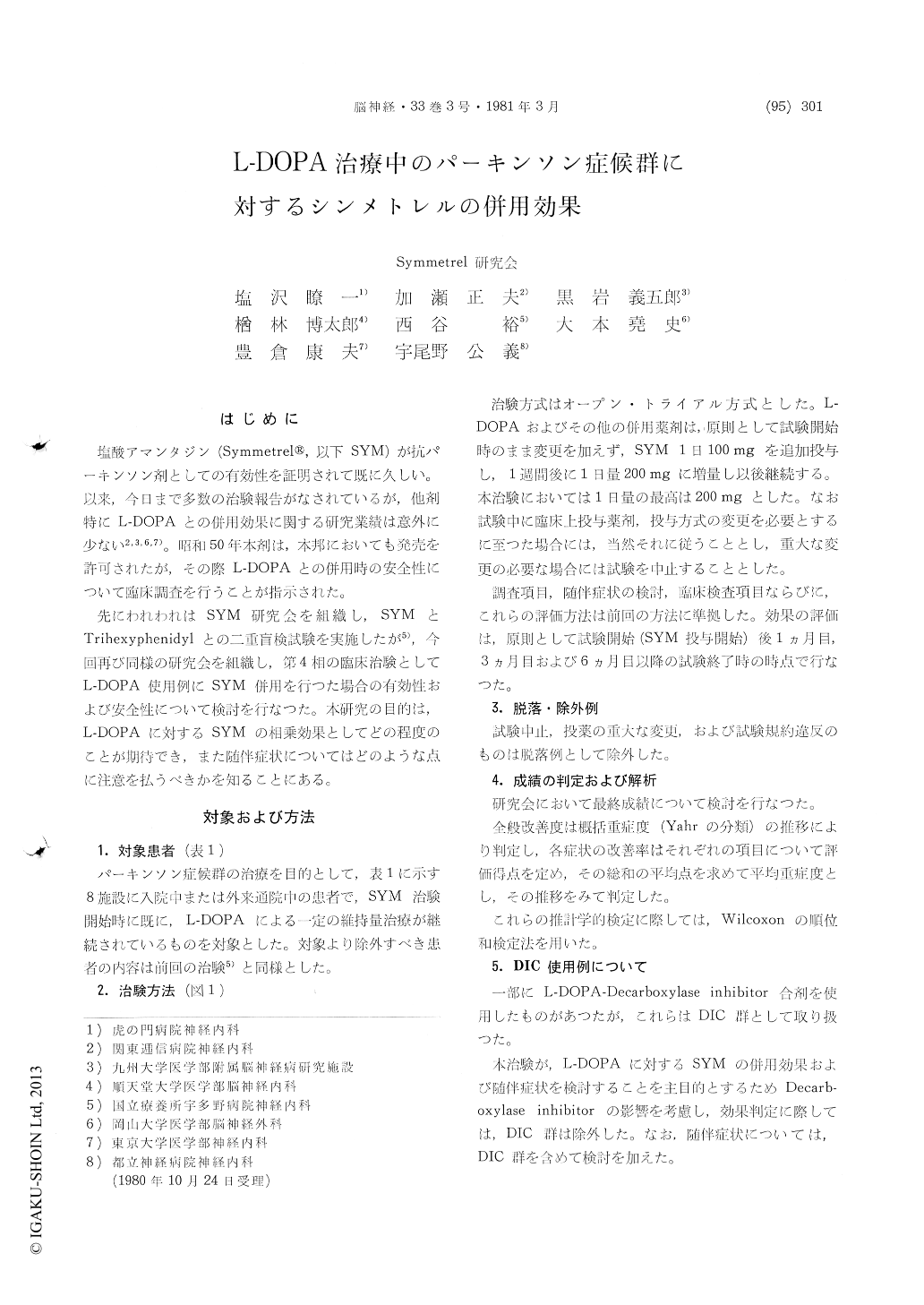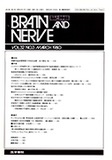Japanese
English
- 有料閲覧
- Abstract 文献概要
- 1ページ目 Look Inside
はじめに
塩酸アマンタジン(SymrnetrelR,以下SYM)が抗パーキンソン剤としての有効性を証明されて既に久しい。以来,今日まで多数の治験報告がなされているが,他剤特にL-DOPAとの併用効果に関する研究業績は意外に少ない2,3,6,7)。昭和50年本剤は,本邦においても発売を許可されたが,その際L-DOPAとの併用時の安全性について臨床調査を行うことが指示された。
先にわれわれはSYM研究会を組織し,SYMとTrihexyphenidylとの二重盲検試験を実施したが5),今回再び同様の研究会を組織し、第4相の臨床治験としてL-DOPA使用例にSYM併用を行つた場合の有効性および安全性について検討を行なつた。本研究の目的は,L-DOPAに対するSYMの相乗効果としてどの程度のことが期待でき,また随伴症状についてはどのような点に注意を払うべきかを知ることにある。
A phase IV open trial on amantadine hydro-chloride (SymmetrelR) was carried out in 86 cases at 8 medical institutions in order to investigate its efficacy and safety when added to the parkin-sonian patient receiving levodopa therapy. The patients enrolled to the study were on the main-tainance dose of levodopa. Symmetrel was added initially by 100mg per day, thereafter increased to 200mg per day.
60 cases: studied for efficacy.
77 cases: studied for side effects.
9 cases: dropped out
The results are summarized as follows:
1) The severity rate at the respective stages of first diagnosis, start of Symmetrel, one month and three months after Symmetrel, and at final assessment were compared according to the Yahr's classification. The patients with Grades I and II at the respective stages were 38.4%, 52.6%, 61.1%, and 62.8%. The last two values were significantly higher than that obtained at the start of Symmetrel.
2) The patients having shown an improvement as compared with the severity of first diagnosis were: 21.7% at the start of Symmetrel, 32.2% after one month, 44.4% after three months, and 45.1% at final assessment.
3) The patients were divided into the following three groups.
Group I —Pre-treatment with levodopa were effective.
Group II —Pre-treatment with levodopa did not produce any changes in symptoms.
Group III —Pre-treatment with levodopa aggravated the symptoms without any favorable effects.
In 14 cases of Group I, further improvement was obtained in 15.4% after one month, in 25.0% after three months, and in 27.3% at final assessment.
In 37 cases of Group II, improvement was obtained in 18.9%, 35.3% and 36.4%, re- spectively. In 9 cases of Group III, improve- ment was seen in 77.8%, 62.5% and 71.4%, respectively.
These results suggest that Symmetrel has an excellent additive effect on the patients with poor response to levodopa treatment.
4) Side effects occured in 52.0% (40 of 77 cases) after Symmetrel combination, many of them being in mild to moderate severity. In 12 cases, reduction of the dose or discontinuance of Symmetrel was necessary because of severe side effects. The main symptoms were visual hallucination (4 cases) and dyskinesia (3 cases).
5) There were no significant changes in labora- tory findings between the start and the end of study.
It is concluded from this study that Symmetrel combination can be strongly recommended in the case where parkinsonian patients poorly respond to levodopa therapy. There was, however, a small but unnegligible incidence of hallucination or dyskinesia which required discontinuance of Sym-metrel treatment. This must be kept in mind when Symmetrel is added to levodopa.

Copyright © 1981, Igaku-Shoin Ltd. All rights reserved.


